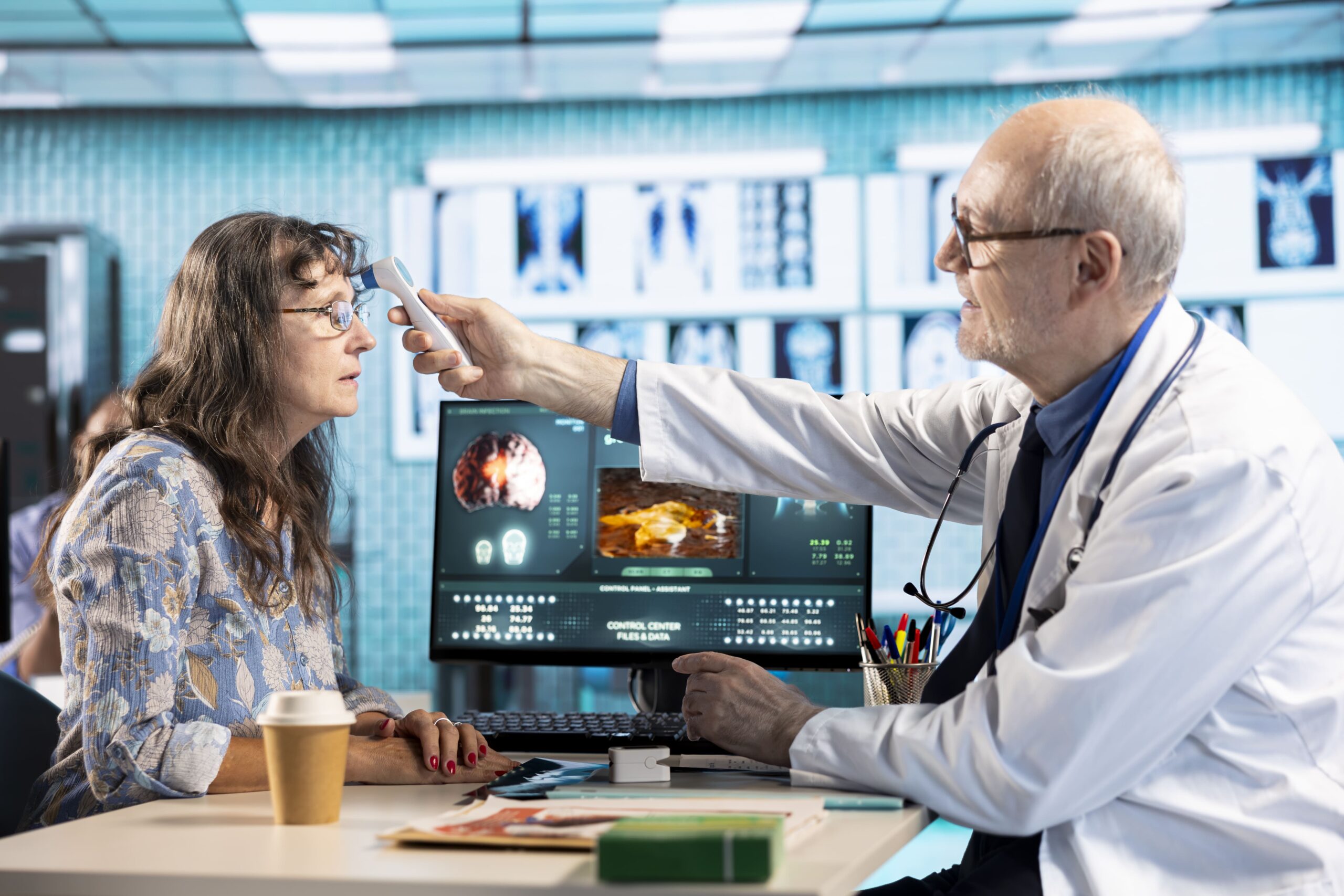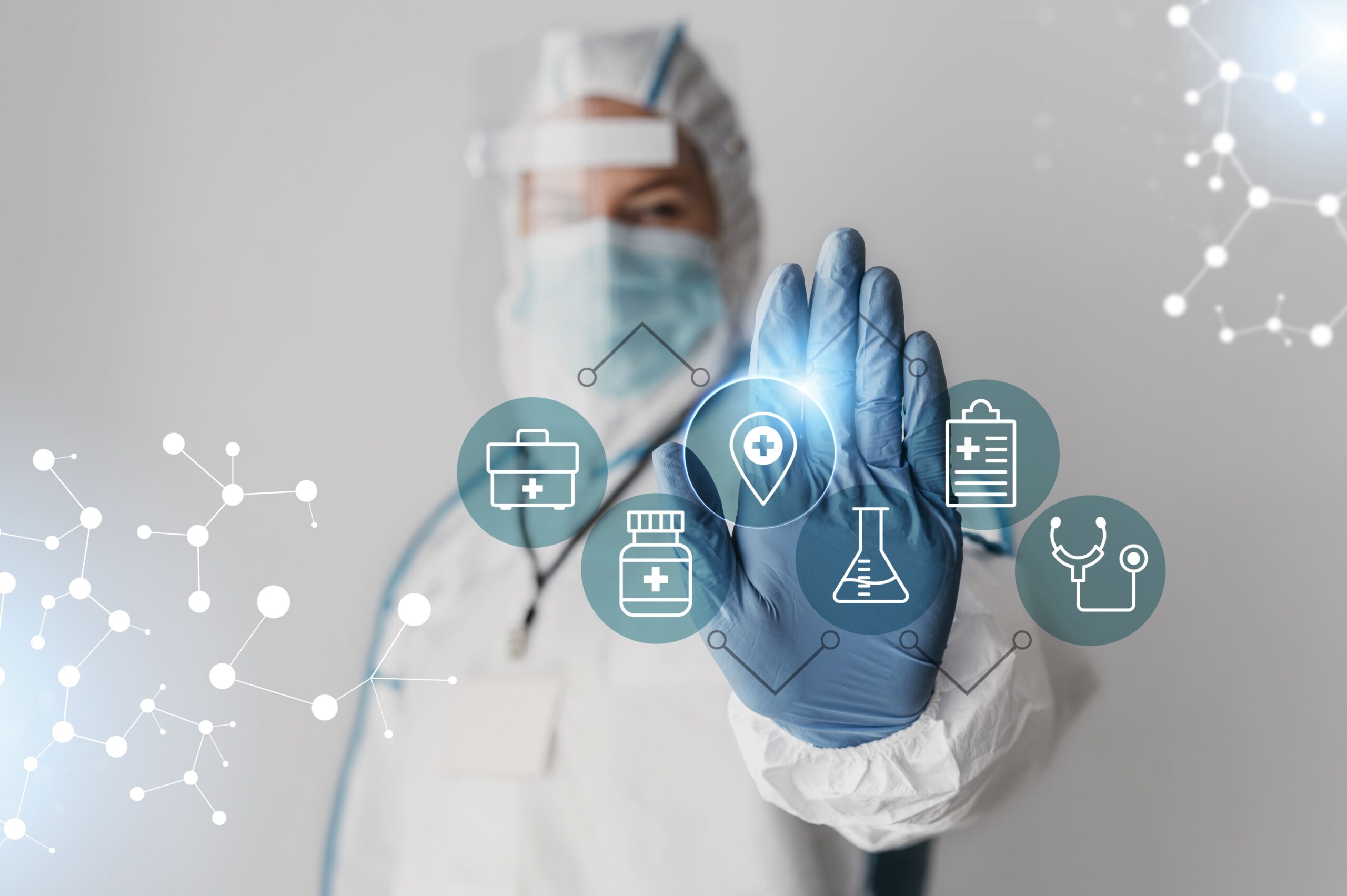Healthcare software development isn’t just about technology—it’s about transforming how care is delivered, accessed, and experienced. From digital patient records to remote consultations, the right software can help providers operate more efficiently, reduce administrative burdens, and ultimately deliver better care.
In this article, we’ll walk through essential strategies, solution types, benefits, and the latest trends shaping healthcare software development today.
Key Takeaways
– Healthcare software development creates integrated systems that help manage medical data, improve patient outcomes, and streamline workflows through automation.
– Popular tools such as Electronic Health Records (EHR), telemedicine platforms, and practice management software play a central role in improving efficiency and care delivery.
– Custom-built healthcare solutions enhance data security, patient experience, and regulatory compliance, making them ideal for organizations with unique needs.
What Healthcare Software Development Means Today

Healthcare software development is the process of building intelligent digital systems that simplify medical workflows and enable better decision-making. As part of the broader software development healthcare industry, it focuses on minimizing paperwork, reducing manual operations, and creating centralized platforms that improve coordination among healthcare providers, patients, and support staff. With the growing complexity of clinical environments, hospital software development plays a vital role in managing integrated care delivery across departments.
As the demand for modern, user-friendly solutions grows, healthcare organizations are increasingly investing in medical software development to meet patient expectations and improve efficiency. These healthcare software development solutions empower patients to book appointments online, consult doctors remotely, and access their medical records anytime. Meanwhile, healthcare software developers are building tools that allow providers to monitor trends, allocate resources, and make faster, data-driven decisions. In hospital settings, hospital software development ensures scalable infrastructure that supports both clinical and administrative workflows.
Success in healthcare software product development depends on key factors like security, usability, interoperability, and compliance with healthcare regulations. When these elements are properly addressed, digital systems not only support healthcare delivery but also create better experiences for both providers and patients. Today, medical software development is not just an IT initiative—it’s a strategic asset for organizations navigating the future of care. As healthcare software developers lead this transformation, their impact on the software development healthcare industry continues to grow. That’s why organizations are focusing more than ever on tailored healthcare software development solutions that align with their long-term clinical and operational goals through expert-led healthcare software product development.
Key Types of Healthcare Software Solutions
Healthcare software can take many forms, depending on the use case. Here are the most common categories used across hospitals, clinics, labs, and even patients’ smartphones:
1. Electronic Health Records (EHR)
EHR systems store patient data digitally—replacing paper charts and giving providers quick access to comprehensive health histories. These platforms integrate with other tools, improving accuracy, care continuity, and workflow efficiency.
2. Telemedicine Platforms
These solutions allow patients to consult with healthcare professionals through video, messaging, or secure portals. Telemedicine has grown significantly since the pandemic, becoming a staple for chronic care management, mental health support, and follow-up consultations.
3. Practice Management Software
This software streamlines the operational side of medical practices. It handles billing, scheduling, and patient communications—reducing administrative load and improving business performance.
4. Additional Solutions Supporting Operations and Engagement
Healthcare CRM tools automate patient communication and enhance engagement
Inventory management systems ensure timely procurement of medical supplies
AI chatbots support patient education, appointment booking, and FAQs
5. Specialized Tools
Mobile health applications for patient self-monitoring
Imaging systems and Picture Archiving and Communication Systems (PACS)
Laboratory Information Management Systems (LIMS)
E-prescription tools for seamless pharmacy coordination
Each of these systems plays a role in ensuring that healthcare is delivered faster, more accurately, and more transparently.
In-Depth: Core Solution Categories
Electronic Health Records (EHR)
EHRs offer centralized, digital access to patient data. Providers can review health history, prescriptions, lab results, and more from one dashboard. EHR systems reduce administrative overhead and enhance care by giving clinicians the insights they need in real time.
However, implementing EHR software can pose challenges, including adapting workflows, addressing data migration, and providing user training. When these are managed well, the long-term advantages in efficiency and patient care are substantial.
Telemedicine Platforms
Telehealth platforms allow patients and doctors to connect without in-person visits. These tools support diagnostics, treatment consultations, follow-ups, and even education and training sessions. Telemedicine is particularly helpful in managing chronic conditions and expanding care access to remote areas.
Key benefits include faster service, reduced transportation barriers, and improved care continuity.
Practice Management Software
This category supports back-office operations. By automating appointment scheduling, billing, claims processing, and reporting, it allows healthcare professionals to spend less time on paperwork and more time on care.
Features often include integration with EHR systems, secure data handling, and analytics dashboards to support strategic decision-making.
Benefits of Custom Healthcare Software Development

While off-the-shelf tools may work for some, many healthcare providers find greater value in tailored solutions. Here’s why:
Cost-Effectiveness Over Time
Though upfront investment is higher, custom software eliminates licensing fees and offers long-term savings.
Tailored to Your Workflows
Custom solutions are designed with your specific workflows and users in mind. This improves usability, reduces training time, and enhances satisfaction.
Improved Patient Experience
Well-designed interfaces and intuitive navigation enable better engagement, leading to higher trust and more proactive patient involvement.
Enhanced Data Security
You have full control over encryption methods, access controls, and compliance features. This is especially important when handling sensitive health data.
Built-in Regulatory Compliance
Custom tools can be aligned with specific standards like HIPAA (USA), GDPR (EU), and others to ensure your organization meets legal requirements from day one.
How Healthcare Software Improves Patient Outcomes
Healthcare software directly contributes to quality care by improving communication, reducing errors, and accelerating decision-making.
Telemedicine platforms support timely care access. EHR systems reduce medical errors and prevent redundant tests. AI-driven decision support systems help doctors detect health patterns earlier and suggest personalized treatments.
These systems enhance coordination across teams, improve follow-up adherence, and provide tools for monitoring progress more effectively—all of which are crucial for better health outcomes.
Improving Data Security in Healthcare Software
With cyberattacks in the healthcare industry on the rise, software systems must be designed with security at their core.
Custom healthcare software allows organizations to enforce their own rules for user access, data storage, encryption, and activity logging. Regular audits and penetration tests can be built into the process, along with protocols for updates and incident response.
This level of security ensures sensitive medical data stays protected while maintaining trust with patients and partners.
Ensuring Regulatory Compliance
Compliance with data privacy regulations is not optional—it’s a fundamental requirement. Custom-built healthcare solutions can be tailored to meet regulations such as:
– HIPAA (Health Insurance Portability and Accountability Act – US)
– GDPR (General Data Protection Regulation – EU)
– HITECH (Health Information Technology for Economic and Clinical Health Act)
By aligning your systems with regulatory standards, you protect both your organization and your patients while maintaining ethical, transparent practices.
Key Stages in Healthcare Software Development

Successful software development in healthcare follows several critical stages:
1. Requirement Analysis
Understanding stakeholder needs and existing workflow challenges is essential. Involving doctors, administrators, and IT experts helps ensure the software fits real-world scenarios.
2. Design and Prototyping
This phase focuses on building intuitive interfaces. Creating early prototypes allows testing by actual users and reveals areas for improvement before full development begins.
3. Development and Testing
Software is built in sprints, with quality assurance and compliance testing running in parallel. This ensures bugs and gaps are identified early, minimizing issues at launch.
4. Deployment and Support
After launch, ongoing updates, maintenance, and support services are essential to keep systems secure, compliant, and responsive to user feedback.
Emerging Trends in Healthcare Software
Healthcare technology continues to evolve rapidly. Some of the most impactful trends include:
Artificial Intelligence and Machine Learning
AI supports better diagnostics, risk prediction, and treatment planning. It automates documentation, reduces administrative load, and even helps personalize care pathways.
Blockchain for Health Data Security
Blockchain ensures encrypted, tamper-proof medical record sharing. It allows patients to own and control their data while improving transparency and interoperability.
Internet of Medical Things (IoMT)
Connected medical devices collect real-time data that can be analyzed to guide treatment. Examples include wearable monitors, smart infusion pumps, and connected inhalers.
Big Data and Personalized Care
Large-scale data analysis helps identify trends across populations, personalize treatment plans, and predict outcomes more accurately.
AR/VR in Medicine
Augmented and virtual reality tools are gaining traction in surgery planning, diagnostics, and even therapeutic treatments and education.
How to Choose the Right Healthcare Software Development Partner
Your choice of development partner can determine the success or failure of your healthcare solution. When evaluating vendors, consider:
Industry Experience
Work with companies that understand healthcare regulations, terminology (like HL7, FHIR, DICOM), and clinical environments.
Technical Capabilities
Check for proven expertise in software engineering, cybersecurity, and integration with healthcare infrastructure.
Full-Cycle Development
Your ideal partner should offer discovery, design, development, testing, and ongoing support—not just the coding phase.
Security and Compliance
Make sure they follow strict data protection protocols, sign NDAs, and have experience building HIPAA/GDPR-compliant systems.
Clear Communication and Collaboration
Strong partnerships depend on transparent timelines, dedicated points of contact, and collaboration throughout the process.
Conclusion
Healthcare software development is transforming how care is delivered. Whether it’s building secure systems for data storage or designing mobile apps for patient engagement, these technologies make healthcare more accessible, efficient, and outcomes-driven.
By investing in custom solutions that align with real-world workflows and compliance needs, healthcare providers can deliver safer, smarter care. Choosing the right development partner, embracing new technologies, and focusing on patients will ensure your software delivers lasting impact.
To learn more about how tailored software can support your organization’s goals, explore our work in healthcare innovation.

Leave a Reply